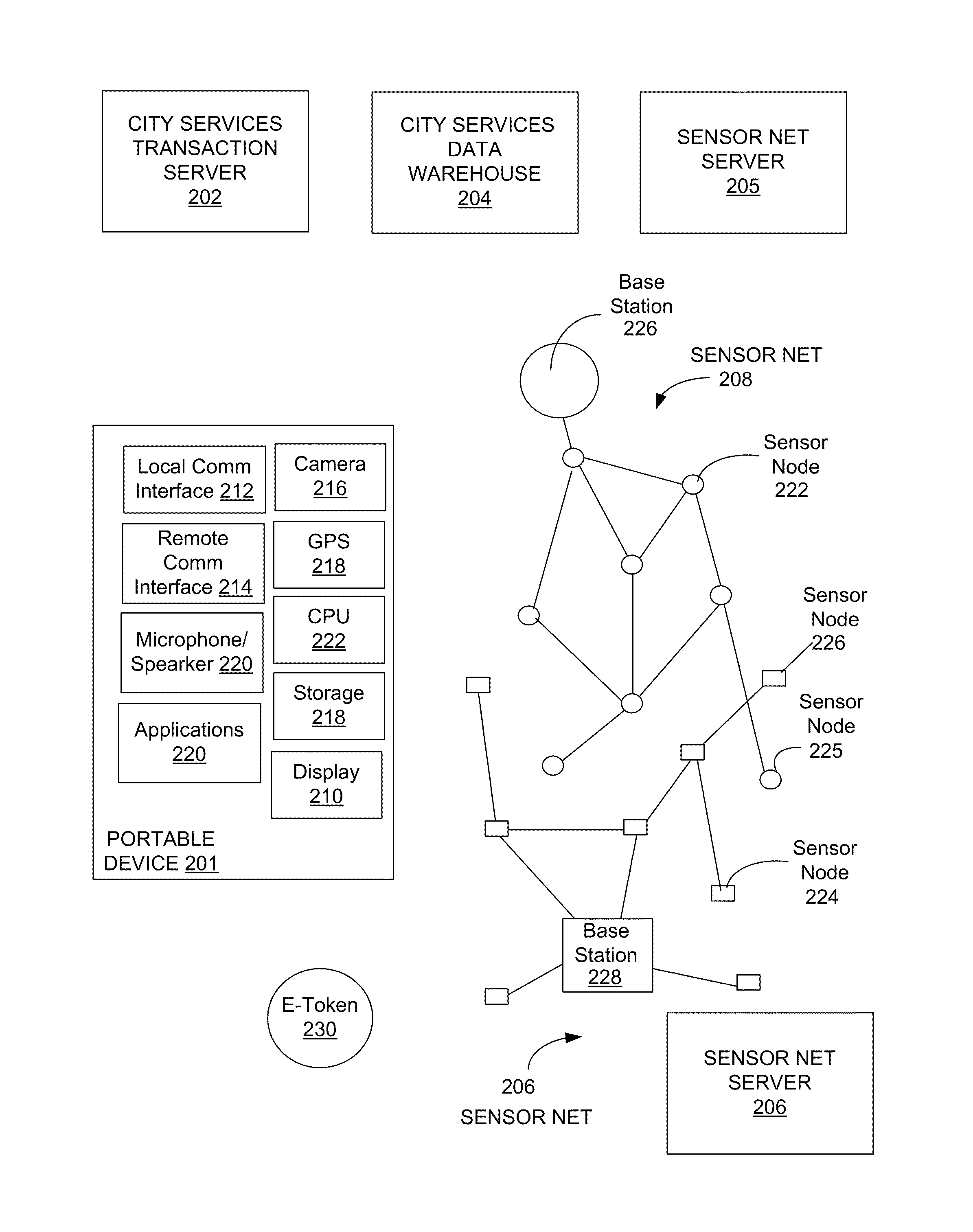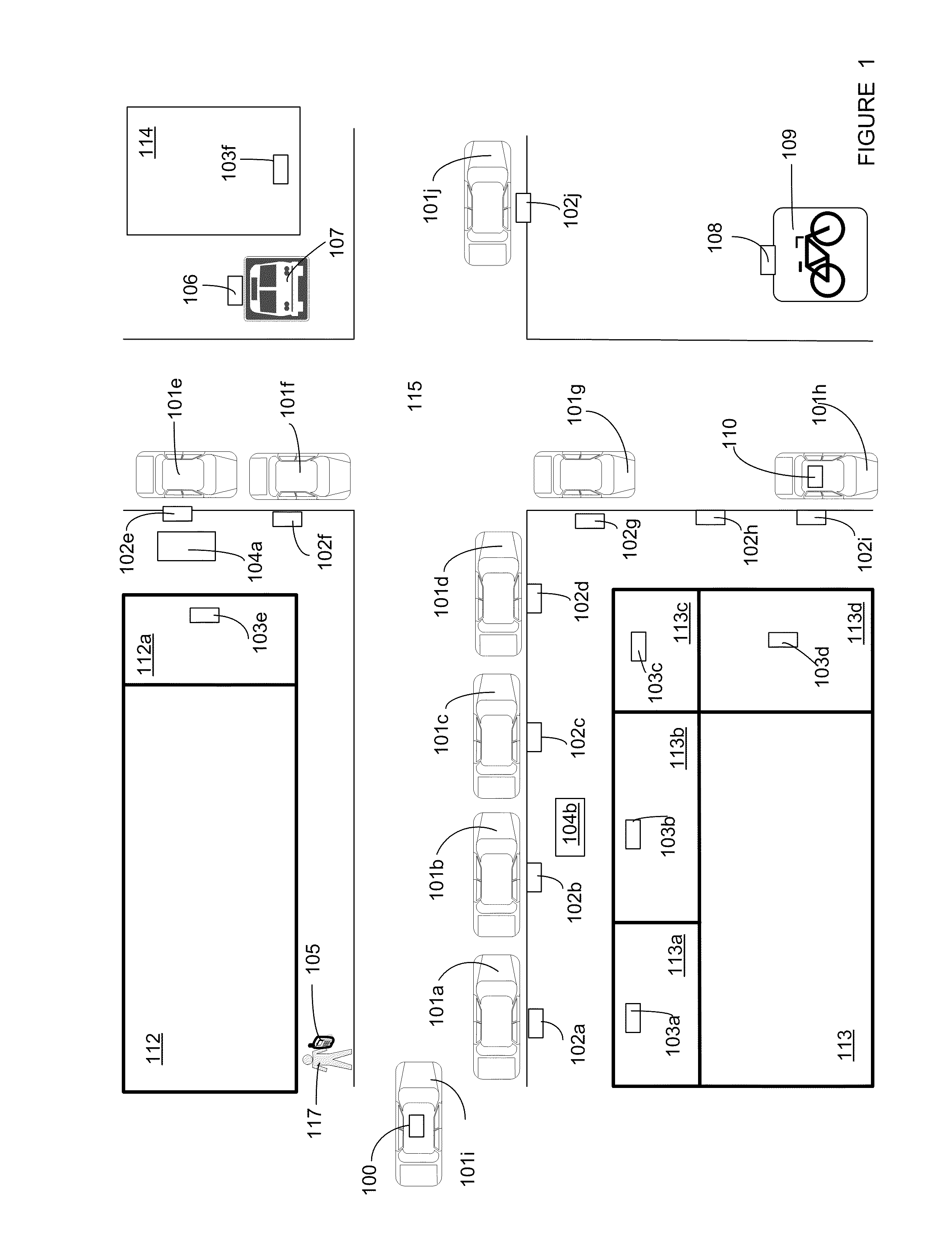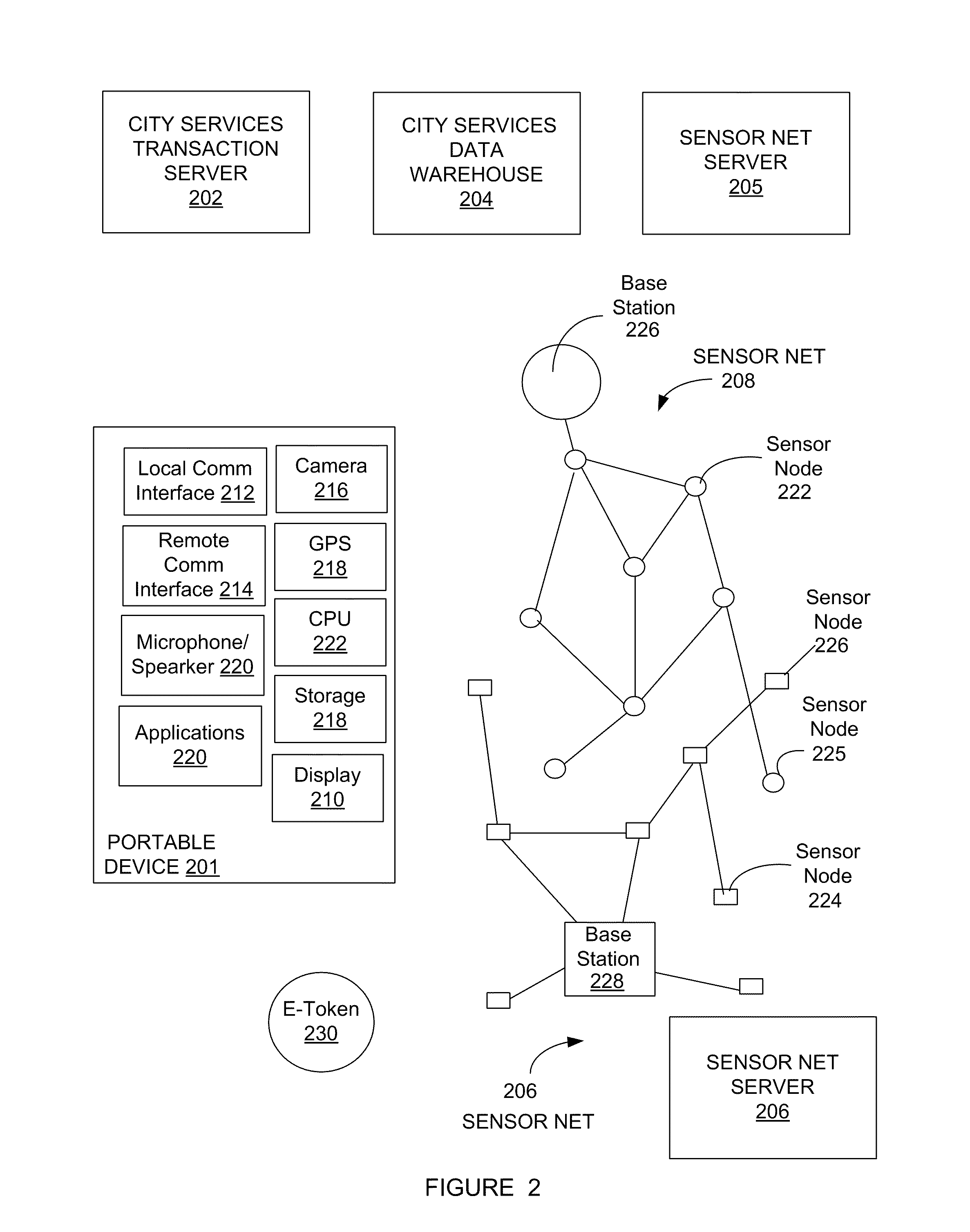Providing City Services using Mobile Devices and a Sensor Network
a technology of mobile devices and sensor networks, applied in the field of providing city services using mobile devices and a sensor network, can solve the problems of reducing and affecting the quality of life of city residents
- Summary
- Abstract
- Description
- Claims
- Application Information
AI Technical Summary
Benefits of technology
Problems solved by technology
Method used
Image
Examples
Embodiment Construction
[0007]This paper describes various embodiments that relate to systems, methods, and apparatus for providing city services, such as parking and transportation services. A mobile device can be configured to receive information from sensor nodes, such as parking sensor nodes, in the vicinity of the mobile device. In a parking application, the mobile device located in a moving vehicle can be configured to locate available parking based upon the information received from the parking sensor nodes. After an available parking space is obtained, the mobile device can be configured to initiate a purchase of parking and receive information related to parking enforcement from a remote server.
[0008]In one embodiment, a mobile device can be generally characterized as comprising, a processor, a memory coupled to the processor, a display, an input mechanism, a first communication interface configured for communication with a cellular network or a wireless data network, a second communication interf...
PUM
 Login to View More
Login to View More Abstract
Description
Claims
Application Information
 Login to View More
Login to View More - R&D
- Intellectual Property
- Life Sciences
- Materials
- Tech Scout
- Unparalleled Data Quality
- Higher Quality Content
- 60% Fewer Hallucinations
Browse by: Latest US Patents, China's latest patents, Technical Efficacy Thesaurus, Application Domain, Technology Topic, Popular Technical Reports.
© 2025 PatSnap. All rights reserved.Legal|Privacy policy|Modern Slavery Act Transparency Statement|Sitemap|About US| Contact US: help@patsnap.com



